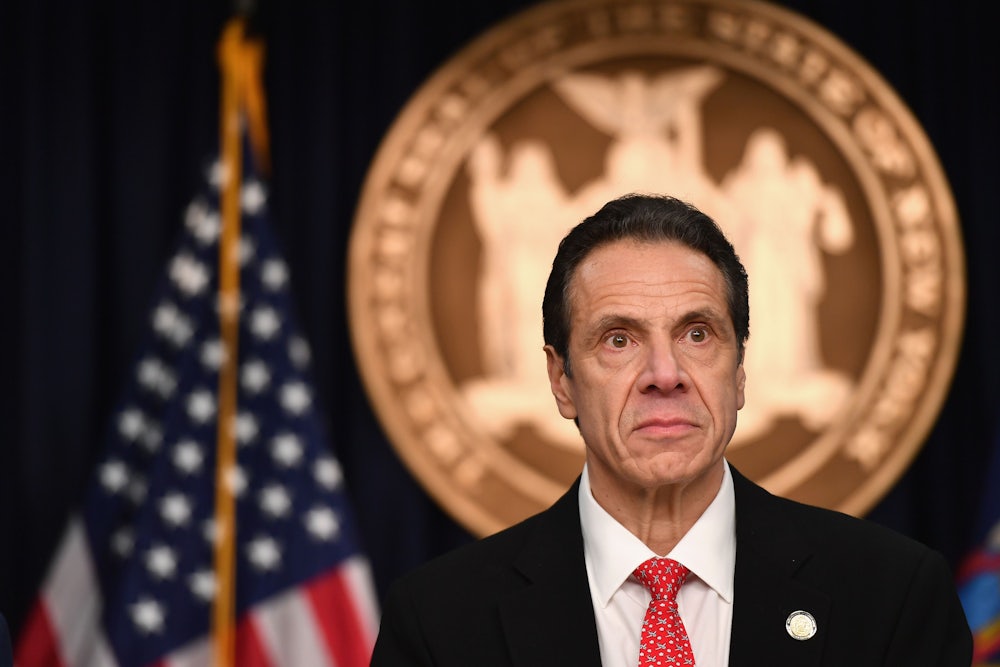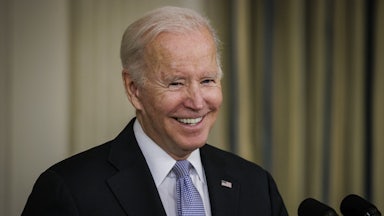Although former New York Governor Andrew Cuomo has been out of office for more than four months after resigning amid sexual harassment and misconduct allegations, he still casts a long shadow over the state’s politics. The whispers about the ex-governor’s future plans began before he even left office. A day after Cuomo announced his resignation, WNYC reported that his critics were already fretting that he would run again for the governorship in a year —he did, after all, still have $20 million in his campaign account. The New York Post recently reported that he was exploring a bid for attorney general, a post he held for four years before ascending to the Executive Mansion and an ideal perch for exacting retribution. One thing nearly everyone agrees on is that the governor is plotting his revenge on those he blames for his downfall—particularly current Governor Kathy Hochul and the Attorney General Tish James—Count of Monte Cristo–style. “What is a man to do with $18 million, a lot of enemies and a desire for revenge?” political consultant Hank Sheinkopf told Politico in September.
An inveterate plotter, Cuomo will undoubtedly continue to seek revenge on his perceived enemies and rivals. But a report released Monday by the New York State Assembly as part of its impeachment investigation should be the final nail in his political coffin. The result of an eight-month investigation, it is a damning account of the myriad ways in which the governor abused his power. Much of the press coverage has unsurprisingly focused on the lucrative deal the governor signed for a book about his leadership during the pandemic and the report’s finding that “the former Governor’s challenges to the allegations” of sexual harassment cannot “overcome the overwhelming evidence of his misconduct.” But its most damning contents revolve around the cover-up of nursing home deaths in the early months of the pandemic—an indelible moral failing that the ex-governor still has not been held accountable for.
There is not much in it that hasn’t been previously reported, either by the press or in a report issued by James earlier this year. But what is here bolsters the contents of those accounts, which is vitally important given Cuomo’s strenuous denials of wrongdoing.
On the sexual harassment allegations, the Assembly corroborated earlier reports and included some new information from former aide Brittany Commisso, whose allegations of groping led to criminal charges against Cuomo. It additionally shows how Cuomo used state resources to complete his book, American Crisis: Leadership Lessons From the Covid-19 Pandemic, for which he received a $5.1 million advance—though the actual amount he ended up being paid was less. “One senior state official referred to work on the Book as no different from any other assignment he received from the Executive Chamber during COVID,” according to the report. Another staffer, believed to be top aide Melissa DeRosa, exchanged more than 1,000 emails with Cuomo’s book publisher.
While Cuomo and his staff were working on that book, which extolled the governor’s efforts fighting the pandemic, they were also working to undercount nursing home deaths. The evidence is damning. In March 2020, Cuomo directed nursing homes to take in Covid-19 patients who had been released from hospitals, prompting an outcry at the time. A report released by the state’s Health Department in July 2020 found that the policy did not lead to an uptick in deaths, but this report did lead to a rash of questions about how the state was reporting its deaths. Given Cuomo’s rising political profile—and lucrative book deal about his leadership during the pandemic—there were concerns that the then governor was doing everything he could to keep a scandal at bay. (In the spring of 2020, Cuomo also instituted liability protections for nursing homes and hospitals, a move critics tied to his connections to those industries, which were major donors.)
Per the Assembly’s report, the administration went to great lengths to ensure that only nursing home residents who died of Covid-19 in nursing homes were counted—residents who died in other facilities were not counted as nursing home deaths, deflating the number, even though it’s highly likely that many of those contracted the virus in their residences before dying in different medical facilities. Nationwide, more than 170,000 nursing home patients have died in the pandemic—the Covid Tracking Project estimated that one in 10 nursing home residents have died of the virus—and more have died in New York than in any other state. While the true number of nursing home deaths is still cloaked in mystery, an investigation from the state attorney general’s office in January found that “published nursing home data reflected and may have been undercounted by as much as 50 percent,” suggesting that the figure could be higher than 15,000.
The decision to do so was the subject of “multiple discussions” between Cuomo and his staff, suggesting a cover-up intentionally engineered to push back against mounting criticism, particularly from the right. That this happened while the governor was working on a book casting himself as a leader in the fight against the pandemic is especially egregious. Cuomo has repeatedly cast these criticisms as a right-wing smear job but it doesn’t change the wider problem: He and his administration deliberately sought to mislead the public about those deaths, and they did so for base political reasons. “Evidence obtained during our investigation demonstrates that while the [Department of Health] Report was released under the auspices of DOH, it was substantially revised by the Executive Chamber and largely intended to combat criticisms regarding former Governor Cuomo’s directive that nursing homes should readmit residents that had been diagnosed with COVID-19,” the report concludes.
The Assembly’s report has revived talk of impeachment—although the fact that Cuomo has left office makes that prospect unlikely. Still, given the severity of the allegations and the fact that they have now been corroborated multiple times, there is a strong case for taking action to hold the former governor accountable. “The impeachment process, I don’t believe, is just to remove someone from office,” Democratic Assemblyman Angelo Santabarbara told Spectrum News. “It’s also to reject this behavior, reject what this governor was doing and was using his office for. We also have to set an example here.”
Regardless, there should be a larger reckoning for the eldercare industry, both inside New York and in the country at large—nursing home patients are among the most vulnerable people of society and yet they are routinely overlooked by politicians, the public, and the media. But Andrew Cuomo has still largely escaped blame for what may be the biggest scandal of his administration.










